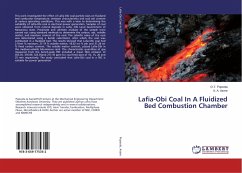Rising gas bubbles in bubbling fluidized beds are important for all hydrodynamics related phenomena, e.g. mass transfer, gas bypassing, heat transfer, gas-solids mixing, etc. However, still many interactions of bubbles with specific operation conditions in fluidized beds are unknown. In this work, fluidized beds with vertical heat exchangers are investigated. Vertical heat exchangers are in this case used to remove the heat of reaction from the exothermal methanation reaction for the production of synthetic natural gas (SNG) from wood. Several vertical tube bank configurations - varying in their diameter, tube-to-tube spacing, and arrangement (square vs. triangular) - have been immersed into a lab-scale fluidized bed. By means of optical probing and pressure fluctuation measurements, their influence on the rising gas bubbles has been evaluated by means of statistical tools. Findings from these experiments are furthermore used to develop a modified approach to scale up fluidized beds with vertical internals.
Hinweis: Dieser Artikel kann nur an eine deutsche Lieferadresse ausgeliefert werden.
Hinweis: Dieser Artikel kann nur an eine deutsche Lieferadresse ausgeliefert werden.








